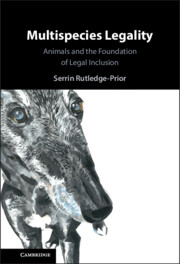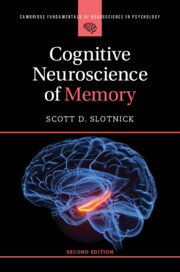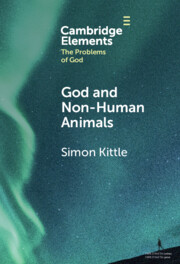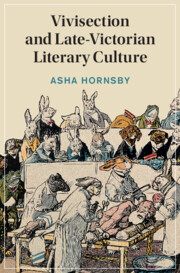Refine search
Actions for selected content:
192 results
15 - One Health and Multispecies Urban Infrastructure
- from Part III - One Health and Future Legal Structures
-
-
- Book:
- The Cambridge Handbook of One Health and the Law
- Published online:
- 25 September 2025
- Print publication:
- 09 October 2025, pp 230-243
-
- Chapter
- Export citation
El rol de los animales en la construcción identitaria de los grupos humanos a lo largo del tiempo (Córdoba, Argentina)
-
- Journal:
- Latin American Antiquity , First View
- Published online by Cambridge University Press:
- 01 October 2025, pp. 1-19
-
- Article
- Export citation
Of Cats, Mice, and Men: Catharine Macaulay on Animals and Moral Education
-
- Journal:
- Journal of the American Philosophical Association , First View
- Published online by Cambridge University Press:
- 22 September 2025, pp. 1-18
-
- Article
-
- You have access
- Open access
- HTML
- Export citation
Toward a Posthumanist Understanding of Wartime Suffering: Public Concern for Animal Welfare in Ukraine
-
- Journal:
- Perspectives on Politics , First View
- Published online by Cambridge University Press:
- 20 August 2025, pp. 1-25
-
- Article
- Export citation
The Plague of Provence (1720–2) and debates in Britain on the cross-species transmission of disease
-
- Journal:
- Medical History , First View
- Published online by Cambridge University Press:
- 14 July 2025, pp. 1-18
-
- Article
-
- You have access
- Open access
- HTML
- Export citation

Multispecies Legality
- Animals and the Foundation of Legal Inclusion
-
- Published online:
- 18 June 2025
- Print publication:
- 21 August 2025

Cognitive Neuroscience of Memory
-
- Published online:
- 12 June 2025
- Print publication:
- 30 January 2025
-
- Textbook
- Export citation
Against “Plebeian Ignorance” and for “Civilized Behavior”: Habsburg Trieste’s Società Zoofila as a Bourgeois Instrument
-
- Journal:
- Austrian History Yearbook / Volume 56 / May 2025
- Published online by Cambridge University Press:
- 07 April 2025, pp. 114-131
- Print publication:
- May 2025
-
- Article
-
- You have access
- Open access
- HTML
- Export citation
The Captive Lives of Ostriches as Belligerent Animal Workers and Bad Mothers
- Part of
-
- Journal:
- Modern American History / Volume 8 / Issue 1 / March 2025
- Published online by Cambridge University Press:
- 01 April 2025, pp. 115-119
-
- Article
-
- You have access
- Open access
- HTML
- Export citation
Canines: Enforcing Race & State
- Part of
-
- Journal:
- Modern American History / Volume 8 / Issue 1 / March 2025
- Published online by Cambridge University Press:
- 01 April 2025, pp. 132-136
-
- Article
-
- You have access
- Open access
- HTML
- Export citation
Chapter 10 - Spirituality
-
- Book:
- Essentials of Social and Emotional Intelligences
- Published online:
- 25 March 2025
- Print publication:
- 27 March 2025, pp 215-246
-
- Chapter
- Export citation

God and Non-Human Animals
-
- Published online:
- 20 March 2025
- Print publication:
- 27 March 2025
-
- Element
- Export citation
Re-considering Environmental Activism in Iran: Materiality and Social Histories of Nature
-
- Journal:
- Iranian Studies ,
- Published online by Cambridge University Press:
- 20 March 2025, pp. 1-12
-
- Article
- Export citation
Toward Legal, Ethical, and Culturally Informed Care of Animal Remains in American Museum Collections
-
- Journal:
- Advances in Archaeological Practice / Volume 12 / Issue 4 / November 2024
- Published online by Cambridge University Press:
- 06 March 2025, pp. 416-423
-
- Article
-
- You have access
- Open access
- HTML
- Export citation
The significance of feathers in early and medieval China
-
- Journal:
- Bulletin of the School of Oriental and African Studies / Volume 88 / Issue 2 / June 2025
- Published online by Cambridge University Press:
- 27 February 2025, pp. 223-241
- Print publication:
- June 2025
-
- Article
-
- You have access
- Open access
- HTML
- Export citation

Vivisection and Late-Victorian Literary Culture
-
- Published online:
- 30 January 2025
- Print publication:
- 06 February 2025
Chapter 3 - Vergil’s Ecological Poem
-
- Book:
- The Environmental Poetry of Augustan Rome
- Published online:
- 12 December 2024
- Print publication:
- 19 December 2024, pp 98-145
-
- Chapter
- Export citation
Chapter 10 - Hegel’s Theory of Animal Embodiment
- from Part III - Organics
-
-
- Book:
- Hegel's <i>Philosophy of Nature</i>
- Published online:
- 19 December 2024
- Print publication:
- 12 December 2024, pp 199-216
-
- Chapter
- Export citation
6 - Rethinking Levinas on Heidegger on Death
- from Part II - Rethinking Death after Heidegger
-
- Book:
- Rethinking Death in and after Heidegger
- Published online:
- 18 December 2024
- Print publication:
- 05 December 2024, pp 181-207
-
- Chapter
- Export citation
